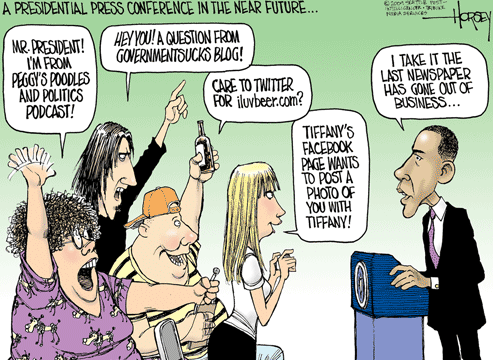 The current economic crisis has made it tougher for businesses to protect jobs and experience revenue growth. To help improve visibility and your brand, some suggest creating a Press Kit (aka media kit). Theoretically, this will help provide media with ‘powerful and actionable information about your business’, but more often than not it is another case of failure to communicate effectively.
The current economic crisis has made it tougher for businesses to protect jobs and experience revenue growth. To help improve visibility and your brand, some suggest creating a Press Kit (aka media kit). Theoretically, this will help provide media with ‘powerful and actionable information about your business’, but more often than not it is another case of failure to communicate effectively.
There are five questions that you need to answer carefully for your business if you hope to make your mark when working with the media:
1) Do you have something interesting to say? Unless you have something to tell a journalist that he or she is just dying to write about, don’t hold your breath; your media kit is unlikely to get you a featured article. Seriously, why do you think any journalist will want to write about you?
2) Why print a media kit when a virtual one will do? You don’t need a glossy and costly press kit these days, a virtual press kit will save you some money and do just as well. We got some help from a designer for the brochure we produced both a printed and a digital version of. The digital version has been downloaded many more times than we have handed out a printed one.
3) Why have a press release when nobody is interested? If we have something interesting to say, we use a personal e-mail message and attach a pdf file to reach our media contacts. But even using a personalized e-mail message may get you little, if any, response or attention. A hundred mail-outs may get one or two journalists to respond, if that (also see point 5 below).
4) Are you expert enough to give a speech at a conference? If the conference is attended by your potential clients and relevant media outlets, it can get you an interview during or after the conference faster than you might think possible.
5) Why should you keep in touch with the few journalists you know? It is all about social networks these days and knowing or having helped a journalist in the past can do wonders. Why not refresh your acquaintance by visiting them at the office for a coffee-break next time you are in town? (Refer to point 3 above: if you are lucky, the next time you send a press release they will at least respond.)
What is needed for effective public relations?
Having said all that, associating oneself with a well-known brand seems to work for us. For our product, the Financial Times seemed the best choice, so we created a product for them that they also wanted to publish. In turn, this allowed us to co-brand ourselves. One inexpensive but effective way was to use an e-mail signature like the one below:
==>
 Welcome to the home of the FT ComMetrics Blog Index that ranks FT Global 500 and Fortune 500 — corporate blogs
Welcome to the home of the FT ComMetrics Blog Index that ranks FT Global 500 and Fortune 500 — corporate blogs
Relevant blog metrics for diary, personal and business blogs
Please subscribe now so you can claim your personal and/or corporate blog AND trace those that you want to compare yourself to.
For Twitter, please use #hashtag ➡ #FTCBI
==>
And yes, besides many clicks and inquiries from e-mail recipients, the above has produced:
- a) interest from journalists wanting to know more about the index, and, most importantly,
b) enquiries from potential clients, of which some signed up right after talking to us. (My.ComMetrics.com is offering a free sign-up to track your blogs during alpha testing – get a first peek at the FT ComMetrics blog index by logging in at FTindex.ComMetrics.com.)
But how much media attention and viral buzz this will create remains to be seen. Ultimately, all that counts is getting those interested users to sign up and pay for our services.
 Bottom line
Bottom line
In our experience, glossy press kits are more likely to make potential investors feel you’ve wasted resources rather than spent them wisely, even if some people try to make you believe otherwise.
Plus, small businesses have to work extremely hard to get attention from traditional media or bloggers. They simply lack the brand recognition of bigger companies like Coca-Cola, that will get journalists to sit up and take notice.
Follow our five pointers and fake all the media attention you can get but don’t waste too much time getting it.
Our question to readers is, do you feel that your media kit has made a real difference to your bottom line, have you used other means to get your message across? Please share your thoughts and insights on this important issue by leaving a comment. Thank you.
Pingback: Urs E. Gattiker
Pingback: Jennifer Berson
Pingback: Startup Moms coach
Pingback: bridalbar